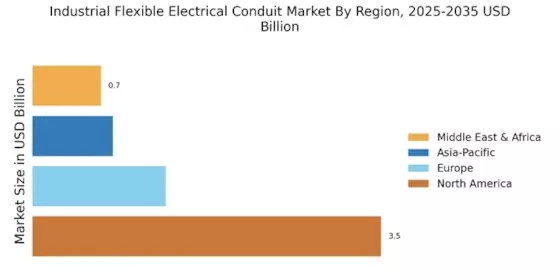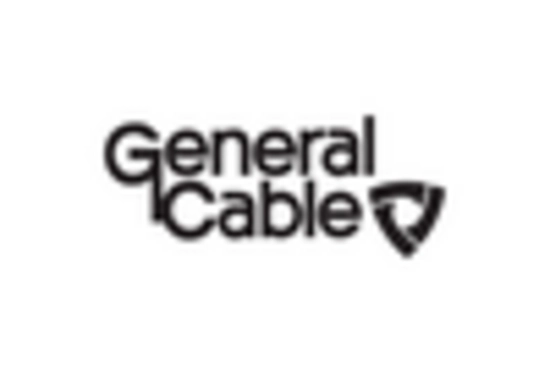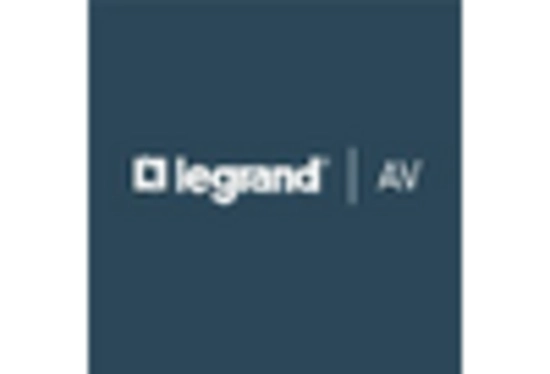Growth in Construction Activities
The Industrial Flexible Electrical Conduit Market is poised for growth due to the resurgence in construction activities across various sectors. With urbanization and infrastructure development on the rise, there is a heightened need for efficient electrical installations. Flexible conduits are favored for their ease of installation and versatility in accommodating complex wiring layouts. Data suggests that the construction industry is projected to expand by approximately 5% annually, which will likely drive the demand for flexible electrical conduits. This growth presents a substantial opportunity for the Industrial Flexible Electrical Conduit Market to cater to the evolving needs of modern construction projects.
Increased Focus on Safety Standards
The Industrial Flexible Electrical Conduit Market is increasingly shaped by a heightened focus on safety standards within industrial environments. Regulatory bodies are implementing stricter guidelines to ensure the safety and reliability of electrical installations. Flexible conduits are recognized for their ability to protect wiring from physical damage and environmental hazards, making them a preferred choice in safety-conscious industries. Recent reports indicate that compliance with safety regulations is driving a significant portion of the market growth, with an estimated increase of 4% in demand for safety-compliant conduits. This trend underscores the importance of the Industrial Flexible Electrical Conduit Market in promoting safe electrical practices across various sectors.
Rising Demand for Energy Efficiency
The Industrial Flexible Electrical Conduit Market is experiencing a notable increase in demand for energy-efficient solutions. As industries strive to reduce operational costs and enhance sustainability, the adoption of flexible conduits that facilitate energy-efficient electrical installations is becoming prevalent. This trend is driven by regulatory frameworks that encourage energy conservation and the growing awareness of environmental impacts. According to recent data, the energy-efficient conduit segment is projected to grow at a compound annual growth rate of approximately 6% over the next five years. This shift not only supports energy savings but also aligns with corporate sustainability goals, thereby propelling the Industrial Flexible Electrical Conduit Market forward.
Expansion of Renewable Energy Projects
The Industrial Flexible Electrical Conduit Market is significantly influenced by the expansion of renewable energy projects. As countries invest heavily in solar, wind, and other renewable energy sources, the need for reliable electrical conduits to protect wiring systems becomes paramount. Flexible conduits are particularly suited for these applications due to their adaptability and durability in various environmental conditions. Recent statistics indicate that the renewable energy sector is expected to grow by over 10% annually, which directly correlates with increased demand for industrial flexible conduits. This trend underscores the critical role of the Industrial Flexible Electrical Conduit Market in supporting the infrastructure of sustainable energy solutions.
Technological Innovations in Conduit Manufacturing
The Industrial Flexible Electrical Conduit Market is benefiting from technological innovations in conduit manufacturing processes. Advances in materials science and production techniques have led to the development of conduits that offer enhanced durability, flexibility, and resistance to environmental factors. These innovations not only improve product performance but also reduce manufacturing costs, making flexible conduits more accessible to a broader range of industries. As manufacturers continue to invest in research and development, the market is likely to see a surge in new product offerings. This trend indicates a promising future for the Industrial Flexible Electrical Conduit Market, as it adapts to meet the demands of modern electrical installations.


















Leave a Comment